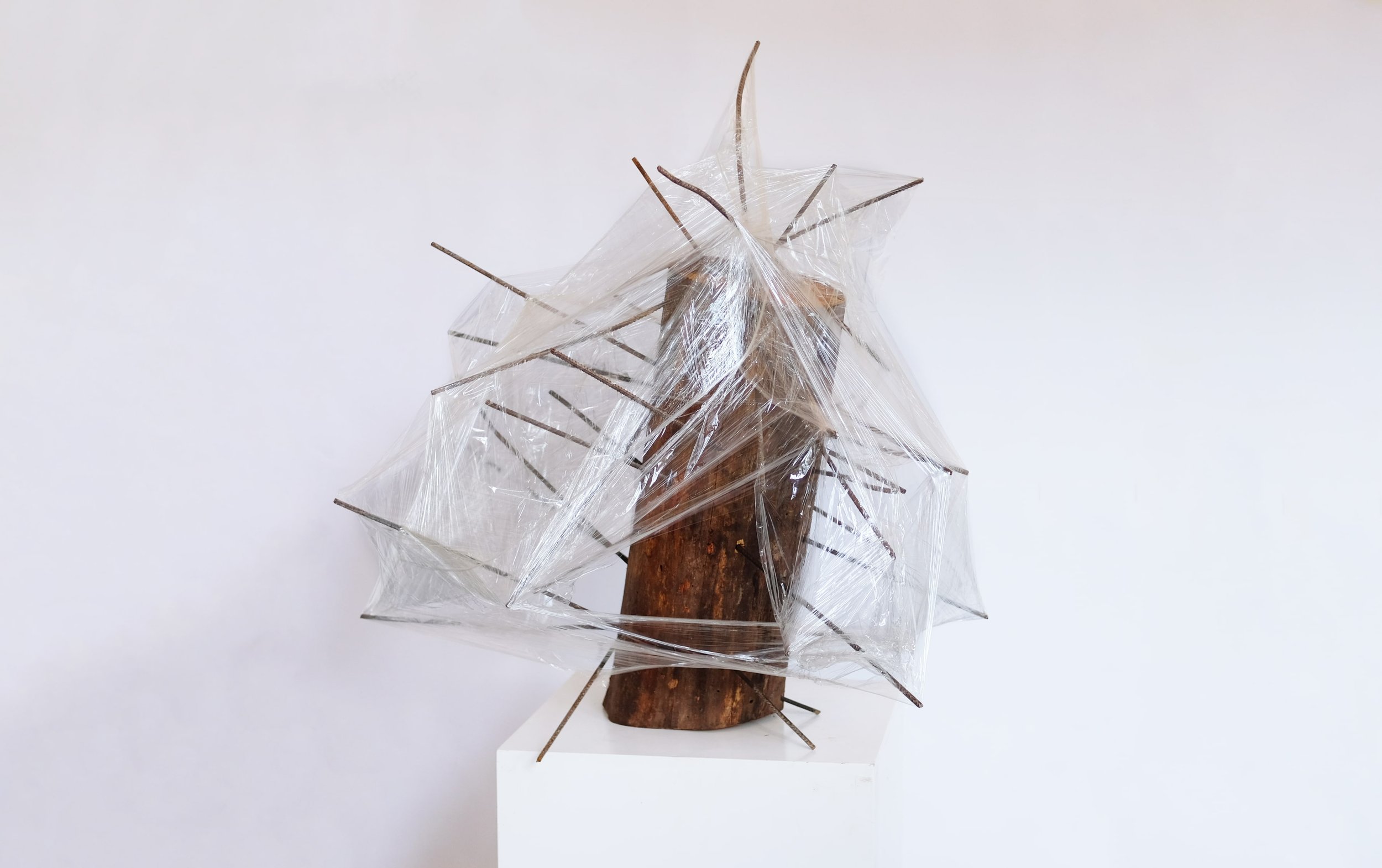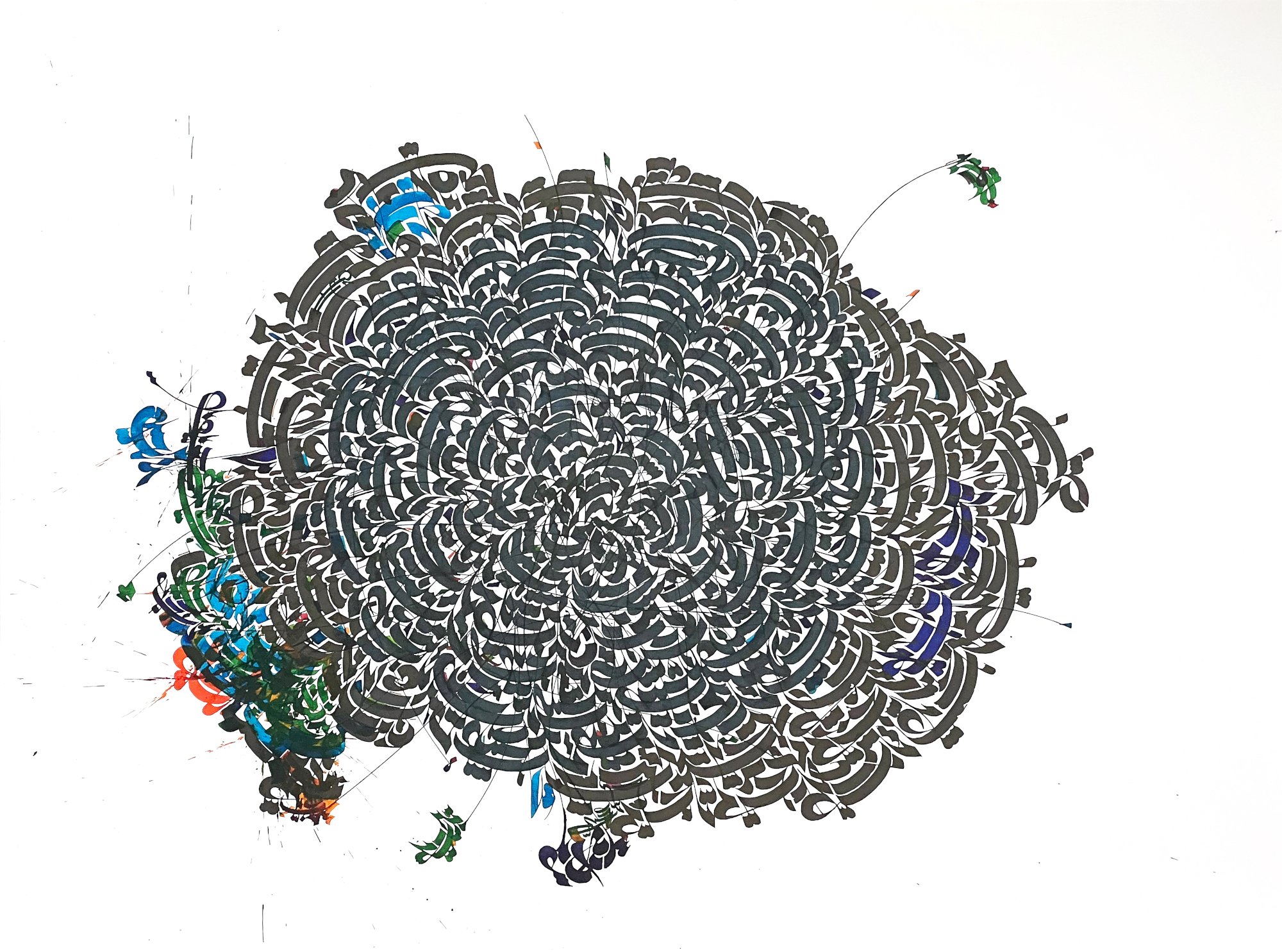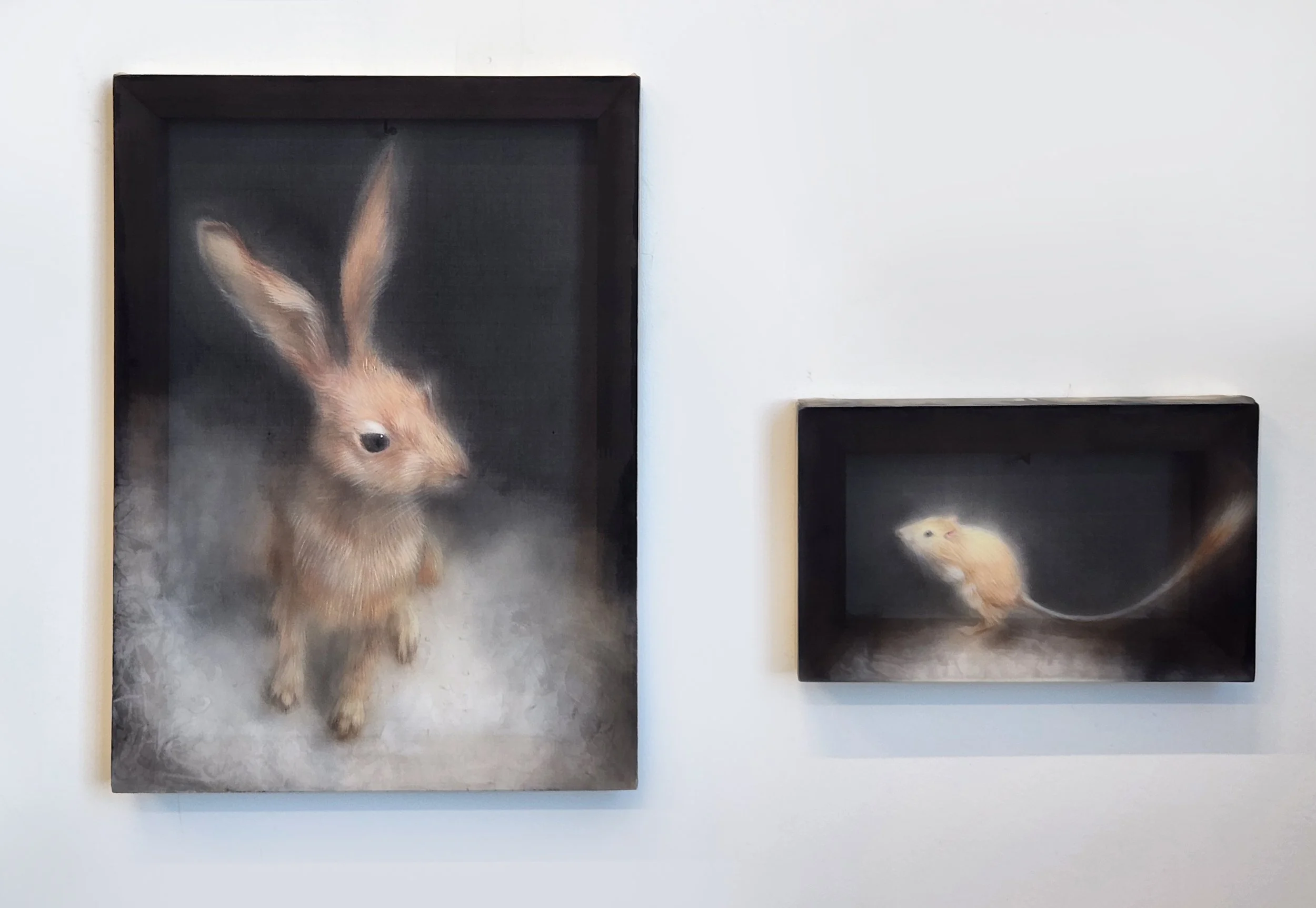10 Questions with Felipe Farme D'Amoed
Felipe was born in Rio de Janeiro, Brazil, and has lived in the US for the past ten years. With a degree in economics and design, he combines psychology and concept to create meaningful pieces analyzing human behavior in nature and society. Core to his visual approach are photography, drawing and painting, which he uses as the basis for capturing emotions generally unnoticed.
Felipe currently focuses on rustic wooden sculptures respecting the natural forms of each piece used, which he ventures to find on burnt or degraded landscapes. Naturally found, dead trunks come with character, which he uses as a starting point to conceive what each sculpture will become. Projects can be both emotionally bonded or interactive, such as lighting, tables, and chairs.
The contrast between each medium used suggests the distance society creates to nature with the increasing dependence on technology. His influence from Japanese American tradition shapes his creative process, respecting the time needed for each development stage. His work ranges from small objects to large interventions.
Felipe Farme D'Amoed portrait
ARTIST STATEMENT
Perfection is nature. The intelligence used to communicate and thrive as one is best expressed when trees get hurt and die. Organisms transfer energy to nurse the wound. Advancement in human development suppressed the significance time has for equilibrium to reinstate.
This shift established a new form of interaction with the natural. The unsurpassable power of the natural spirit is fading. Felipe Farme D’Amoed uses that purity to reconnect people with objects and arouse a sense of belonging.
In his sculpture, the artist uses plastic and rebar to torture the trunk blatantly. By suffocating the piece, impeding it to breathe and recover, he transfers agony to the offender - a narrative true as a prey on a spiderweb with no room for mercy. Asphyxiation kills all living beings. In each confronting medium, the artist elucidates our concern for the soul and place in the world.
Sufocado, Sculpture, 95x97x95 cm, 2021 © Felipe Farme D'Amoed
Limited edition art collectors’ book
INTERVIEW
First of all, why are you an artist, and how did you become one?
Everyone makes art at some level. The high level of connectivity we experience today allows anyone to become an artist if they present themselves in a way that appeals to some niche. Every type of art can have a market if found. That makes me skeptical, though, because it also increases the depth of such art.
To me, being an artist is similar to a battle, and one I recently decided to fight in full-time since the beginning of the pandemic.
I used to be a freelance designer, where I tapped into my own projects between gigs. I have drawn since I was young and slowly transitioned into making small sculptures and interventions. I became an artist from a need to do manual work as part of my routine and well-being. Manual work is therapeutic to me. We lack empathy today, with emotions being replaced by productivity and economies of scale. That is what I fight for in my work, to bring us back to conscious action.
What is your personal aim as an artist?
I want to be a part of the consequences I hope my work creates for humanity. Covid has spun my world upside down, as it has for many, I'm sure. But it opened to me the opportunity to dedicate myself to a voice in my work, honing the practical part of woodworking, and improving in other techniques that I used to incorporate. My aim is to become a full-time artist and make a living solely off my pieces.
The art world fluctuates more often than not, and definitely more than my last few jobs. You have to be able to sell your work and keep on creating from the inside. Not only does art brings me to face my dark side, but it is also physically demanding. Keeping up with a pace that takes me to legitimate expression is frightening when I think about it. A mentor of mine once asked if I was really sure this is what I wanted to pursue for the rest of my life. I reflected on that question, warned about the unsettling nature of the art world. Hence, I take it day by day, always with that bug in my ear that questions if I can keep a pace and make a living out of it.
Sufocado, Sculpture, 95x97x95 cm, 2021 © Felipe Farme D'Amoed
Sufocado, Sculpture, 95x97x95 cm, 2021 © Felipe Farme D'Amoed
And how would you define yourself as an artist?
As previously mentioned, I am new to the art world. Since freelancing as a designer, I've always seen myself in the same rut, thinking way more than making. I've fought with it for as long as I remember and have always seen it as a bad thing. It is, but not all that bad. I'm trying to balance the think-do relationship in creation. However, I still consider thinking being seventy percent of my work as an artist. I think and plan, write and think again for weeks or months before actually turning it into physical matter. When I do, it's like I get into this rhythm and want to complete a piece in one go, which never happens.
The time between resting and getting back to what I am doing is nerve-racking for me. I keep thinking about the practical parts instead of taking the time to actually let my body recover. That parallels to the battle I mentioned when preparing whatever I'm doing. Because I take so much time thinking, I try to "catch up" when making, so I used to work on multiple pieces at a time. I still want to time-lapse myself in my studio one day and just study my way of working.
Nature seems to be a huge source of inspiration from you and your work. What other sources and mediums do you use?
It is, and it has always been, in my life. I like to say that perfection only exists in nature, the rhythm and flow it operates. I used to work for a non-profit focused on sea turtle poachers in Central America, which opened my eye to our behavior as human beings. Conscious action became a focus to manage the noise in my head, and nature is a great source for channeling it. This job showed me the serious effects our oceans suffer because of how societies, who depend on it for a living, treat them.
I began to question how we as a general population treat the place we inhabit and how we harm ourselves while knowing it. What leads people to inflict self-harm? Funny enough, I thought people with more knowledge and higher education would act differently, but they don't. So pain became the central theme for much of my initial work, using nature as the main character.
Nature will always play some, if not most, part in my work, but I have been trying other mediums to express emotions people feel in common but never share. I have recently explored opposing mediums to wood and finding ways to connect them and make others reflect on their own traumas.
What is your creative process like? And how did you evolve this way of working?
I would actually love to know how other people's creative processes happen. I have always tended to work alone, by myself, without much interaction at all. I still believe that is my best environment to create, so being in nature is my go-to for the thinking part. Observation is key to my work, where I look for objects with an apparent character. I am always looking for broken trunks, logs, and other objects that dictate how I should clean them to the public to express our pain.
I am slowly creating a network of people, mostly farmers, who understand what I'm looking for, so they have helped me gather more material. Because my thinking part of the process is so dominant, I try to do it in certain places I know I can find the material I use. It usually takes some time with them sitting in my studio before I begin shaping them. That'sThat's where other mediums usually help, combining them to provide a form of connection between humans and nature.
I moved my studio to a collective with other artists at a house in Rio de Janeiro, and that has been an interesting experience. Having the feedback on what they see throughout the process has helped me understand how others might react to what I am trying to portray.
Sufocado #2B, Photography, 21x38 cm, 2021 © Felipe Farme D'Amoed
Sufocado #2D, Photography, 21x38 cm, 2021 © Felipe Farme D'Amoed
What aspect of your work do you pay particular attention to?
That is a great question, and another part of me fighting myself relationship of the job. Sometimes I focus too much on the dumbest details so it can be aesthetically beautiful. But then I forego what I am trying to express. Other times (like recently), I let that go and allow for the emotion and even-so-called ugliness to take place. Mark Manson'sManson's book Everything Is Fucked has an analogy about the self as a driving car with the pilot and copilot. Society shaped us into believing that the driver is the rational self while the sensitive copilot is persistently trying to steer the wheel sideways. In reality, who drives the human car is the sensitive self, our gut, and our emotions, and the rational copilot is there just to make sure we don't crash and die. That we crash sometimes, I am very sure, but that the fun in living, right?
Is there anything you would like to experiment with? Any medium or technique you would like to incorporate in your work?
Metal and plastic. I have done a few pieces, like the one I sent you guys, where I work with plastic sheets as a veil of beauty and means of suffocation. I want to try on different types of plastic, and those commonly tripped over or stepped on. I spent a summer collecting plastic straws for the beach and making portable beds for the homeless sleep on.
Metal is just so cool and dangerous. I started cutting and welding recently, and it's a blast. I'm not sure where I'm going with it, but I have also tried to incorporate metal to raise the factory-versus nature "healthy" relationship. It can be beautiful at the right measure, but we still haven't realized how our dependence on the factory will lead all societies to fall.
Before focusing mainly on sculptures, I used to draw and paint. Using canvas has a unique way of expression, which I miss. I decided I'd return to that when I finish my current projects. I have recently gotten into tattooing, which is very fun! Its permanence has a way to bring my focus as few other things have. These mediums seem distant from my line of work, and I just haven't found the connecting line yet, but I'm sure there is one. Or maybe I'llI'll keep them in separate cages and fight them at different times.
What do you think about the art community and market? And how did your perception change over the last year due to the pandemic?
It all depends on where you live and how you want to be a part of it. I mentioned that the internet allowed artists to emerge and make a living, which also brought some downsides. I see it as it split the art world in two. The first is those who understand and appreciate "real" art, and the second is those who don't mind emotionless art and just want to have something trending. The latter rose substantially in the pandemic, but I believe the hype will create room for education on the subject to return to its level of importance.
Also, every community has niched markets for art, so it's always good to study what different tribes relate to and how that reflects their behavior towards life. One thing I recently realized is that knowing to sell yourself can sell independent of what you create.
The pandemic fostered an environment for well-being, especially at home. They invested more in comfort and simple well-being, which encompasses art, so that is a good thing. The only criticism I'd dare to mention is that with a bigger pond, there is more muck.
Sufocado, Sculpture, 95x97x95 cm, 2021 © Felipe Farme D'Amoed
What are you working on now, and what are your plans for the future? Anything exciting you can tell us about?
I am currently working on a stone-aged gibbet. It is my biggest piece so far, and it's taking a toll on my body. I want to increase the scale of my pieces and hopefully intervene in a large public environment. I have also been carving smaller wooden sculptures. I intend to try on more realistic chiseled pieces and maybe full-size quirked-out creatures or out-of-proportion everyday objects.
And lastly, what is one piece of advice you would give to an emerging artist?
Well, I have tonnes of advice for myself that I never follow. But one thing I have been making peace with is to love thyself. And being hardheaded is not a bad thing. Certain people learn by doing, and if you just take what others say for granted, you'll never be able to say it with propriety. Also, the classic one, don't be afraid of doing it wrong or getting bad criticism. That will happen eventually, so be scared but do it anyway. I used to be afraid of the next cut or the next step, thinking it had to be perfect or I'dI'd ruin it. In the Japanese tradition, they used to glue broken vases with gold to show the beauty of imperfection. We just have to trust that our life is not a race. Another mom's advice, if you forego doing something with the fear of negative criticism, that will happen. At least build the character of telling yourself you did it, even if it fails. Keep at it, and you'll find your way, one way or another. I hope I listen to my own advice.






















